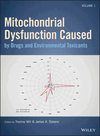Lessons Learned from a Phase I Clinical Trial of Mitochondrial Complex I Inhibition
Summary
In 2014, a first-in-human clinical trial of a drug intended to treat symptomatic peripheral artery disease (PAD) via activation of 5' AMP-activated protein kinase (AMPK) was performed. Activation of AMPK with R118, an indirect AMPK activator, was demonstrated to increase endothelial nitric oxide synthase (eNOS) production and improve exercise capacity in a mouse model of PAD. R118 does not activate AMPK directly, but rather inhibits mitochondrial respiration by inhibiting mitochondrial complex I with blunting of NADH oxidation. The phase I trial of R118 was designed to investigate the safety and tolerability of R118 and to characterize the pharmacokinetic and pharmacodynamic profile of R118 in healthy human volunteers. The interindividual pharmacokinetics of R118 varied dramatically, and serum R118 levels did not necessarily predict degree of lactic acidosis. The experience from the phase I clinical trial was a dramatic demonstration of how essential it is to utilize the right preclinical model to translate safety data to humans.



